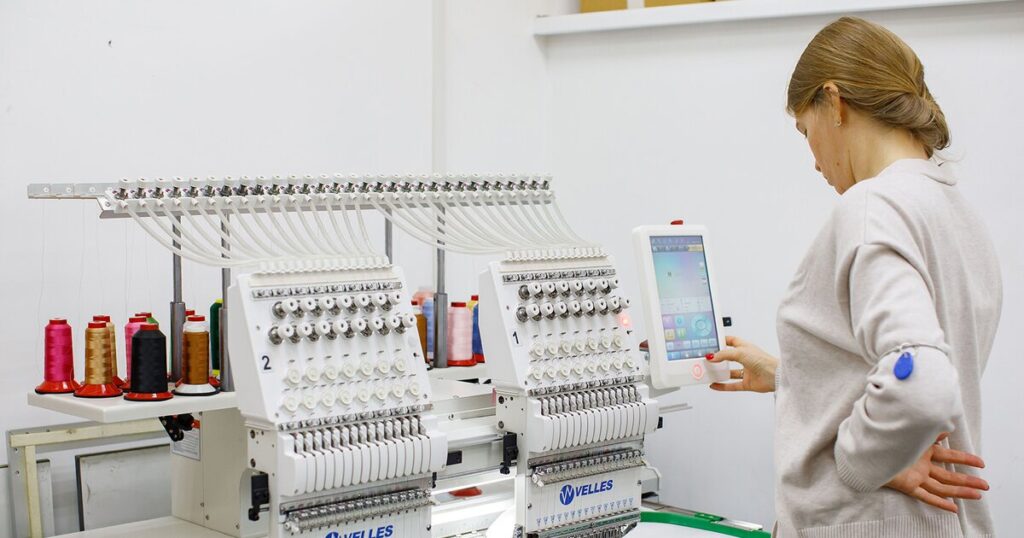The Essentials of Digitizing for Embroidery What You Need to Know

Introduction to Embroidery Digitizing
Embroidery digitizing is a vital process in the creation of high-quality embroidered products. It involves converting artwork into a digital format that embroidery machines can read and execute. This process requires precision, attention to detail, and specialized software. We are going the discuss all the tips you need to know about digitizing for embroidery by Digitizing Buddy.
Why Digitizing is Important
Digitizing is crucial because it determines how an embroidery machine will stitch a design. The quality of the digitizing directly affects the final embroidered product’s appearance, durability, and clarity. Proper digitizing ensures that the design is accurately reproduced, maintains its integrity, and meets the client’s expectations.
Key Elements of Digitizing
There are several key elements in digitizing for embroidery, including stitch types, stitch density, and underlay. Each of these elements must be carefully considered and adjusted based on the fabric type, design complexity, and intended use of the embroidery.
Understanding Stitch Types
Satin Stitches
Satin stitches are commonly used for creating smooth, clean lines and edges in embroidery. They are ideal for text, borders, and small details. The width and length of satin stitches can be adjusted to achieve the desired effect.
Fill Stitches
Fill stitches, also known as tatami or run stitches, are used to cover larger areas of a design. They provide texture and can be adjusted in density and pattern to create different effects. Fill stitches are versatile and can be used in a variety of designs.
Running Stitches
Running stitches are simple, continuous stitches used for outlining and detailing. They are ideal for creating fine lines and intricate details. Running stitches can also be used to create shading and texture within a design.
Choosing the Right Software
Popular Embroidery Digitizing Software
There are several popular software options for embroidery digitizing, including Wilcom, Hatch, and Pulse. Each software has its own set of features and capabilities, making it important to choose one that meets your specific needs and preferences.
Features to Look For
When selecting digitizing software, look for features such as ease of use, advanced editing tools, and support for various file formats. Other important features include auto-digitizing, stitch simulation, and compatibility with your embroidery machine.
Cost Considerations
The cost of digitizing software can vary widely, from free or low-cost options to high-end professional software. Consider your budget and the level of functionality you need when choosing a software package.
The Digitizing Process
Step 1: Preparing the Artwork
The first step in the digitizing process is preparing the artwork. This involves cleaning up the design, ensuring it is in a suitable format, and making any necessary adjustments. High-resolution images work best for digitizing, as they provide more detail and clarity.
Step 2: Setting Up the Design
Next, the design is imported into the digitizing software. Here, the digitizer sets up the design, including selecting the appropriate stitch types, densities, and underlay settings. The design is divided into different sections, each with its own stitching parameters.
Step 3: Digitizing the Design
The actual digitizing process involves converting the design into a series of stitches. The digitizer manually places stitches or uses auto-digitizing features to create the embroidery file. This step requires a deep understanding of how stitches interact with fabric and how different elements of the design will be stitched.
Step 4: Testing and Refining
Once the design is digitized, it is tested by stitching it out on a sample fabric. This allows the digitizer to identify any issues and make necessary adjustments. Testing ensures that the final design will stitch out correctly and look as intended.
Common Challenges in Digitizing
Fabric Considerations
Different fabrics require different digitizing techniques. For example, stretchy or delicate fabrics may need more underlay and different stitch densities to prevent puckering or distortion. Understanding how various fabrics interact with stitches is crucial for successful digitizing.
Design Complexity
Complex designs with intricate details can be challenging to digitize. Balancing the need for detail with the limitations of embroidery machines and thread can be difficult. Simplifying certain elements and using appropriate stitch types can help manage complexity.
Stitch Density
Stitch density refers to the number of stitches in a given area. Too high a density can cause thread breaks and fabric distortion, while too low a density can result in a design that looks sparse or incomplete. Finding the right balance is key to achieving a high-quality embroidery.
Tips for Successful Digitizing
Start Simple
If you’re new to digitizing, start with simple designs. This will help you understand the basics of stitch placement, density, and other key elements. As you gain experience, you can gradually tackle more complex designs.
Learn from Mistakes
Digitizing is a skill that takes time to master. Don’t be discouraged by mistakes. Use them as learning opportunities to improve your technique. Over time, you’ll develop a better understanding of what works and what doesn’t.
Invest in Training
Consider taking courses or workshops on digitizing. There are many online resources and tutorials available that can help you learn advanced techniques and improve your skills. Investing in training can significantly speed up your learning curve.
The Role of Underlay in Digitizing
What is Underlay?
Underlay stitches are the foundation of an embroidery design. They are stitched first, providing a base for the top stitches. Underlay helps stabilize the fabric, reduce puckering, and improve the overall appearance of the embroidery.
Types of Underlay
There are several types of underlay stitches, including edge run, center walk, and zigzag. Each type serves a different purpose and is used in different parts of a design. The choice of underlay depends on the fabric type, design complexity, and desired finish.
Importance of Proper Underlay
Proper underlay is crucial for a high-quality embroidery. It ensures that the top stitches sit smoothly on the fabric, reducing the risk of distortion and thread breaks. Good underlay also improves the durability and longevity of the embroidery.
Advanced Digitizing Techniques
3D Puff Embroidery
3D puff embroidery involves using foam to create a raised effect in the design. This technique requires careful digitizing to ensure that the foam is properly covered and the design has a clean, professional finish.
Appliqué Digitizing
Appliqué involves stitching a piece of fabric onto another fabric, creating a layered effect. Digitizing for appliqué requires setting up the design to include placement stitches, tack-down stitches, and cover stitches.
Gradient and Shading
Creating gradients and shading in embroidery involves using different stitch types and densities to create a smooth transition between colors. This technique adds depth and dimension to the design, making it more visually appealing.
Conclusion
Digitizing for embroidery is a complex but rewarding process. It requires a deep understanding of stitch types, fabric behavior, and design principles. By mastering these elements and using the right tools and techniques, you can create high-quality, detailed embroidery that stands out. Whether you’re a beginner or an experienced digitizer, continuous learning and practice are key to success in this field. Trust in professional services like Digitizing Buddy can also ensure your designs are executed with precision and quality, bringing your creative visions to life.

 Virginia Business Blueprint: How to Kickstart Your Entrepreneurial Journey
Virginia Business Blueprint: How to Kickstart Your Entrepreneurial Journey  The Role of Udyam Registration in Atmanirbhar Bharat Abhiyan
The Role of Udyam Registration in Atmanirbhar Bharat Abhiyan  Mango Costs in Pakistan 2024: A Total Diagram
Mango Costs in Pakistan 2024: A Total Diagram  Why Professional Power Management Can Make or Break Your Event
Why Professional Power Management Can Make or Break Your Event  Experience The Thrill Of Zipline Dubai With Captain Dunes
Experience The Thrill Of Zipline Dubai With Captain Dunes  Exploring London’s Best Butcher Shops
Exploring London’s Best Butcher Shops  Enhance Your Shop Appeal with Sydney’s Best Carpentry Services
Enhance Your Shop Appeal with Sydney’s Best Carpentry Services  A Detailed Look at the Features of the LEGO Technic Mars Crew Exploration Rover
A Detailed Look at the Features of the LEGO Technic Mars Crew Exploration Rover